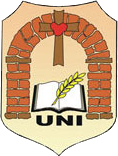AUTORES: SOLEDAD ROSNER – WALTER MARTÍNEZ
TUTOR: Dra. Estelvina Rodriguez
RESUMEN
El presente trabajo de investigación fue del tipo descriptivo, con un enfoque cuantitativo, cuyo objetivo principal fue analizar cambios en las características fisicoquímicas y bacteriológicas de las aguas del río Paraná, en la zona de la ciudad de Encarnación, al elevar la cota a su nivel máximo. El mismo se logró a través de la identificación de los cambios significativos en los valores de DBO y DQO, y la comparación de los parámetros básicos, como turbidez, pH, alcalinidad, color, temperatura, sólidos disueltos y conductividad. En cuanto a las unidades de análisis, las mismas fueron muestras de aguas superficiales extraídas del río Paraná, según técnica de muestreo y conservación apropiados, antes y después de la elevación de la cota, en los periodos 2008 – 2010, y 2015 – 2016, respectivamente. Los resultados obtenidos por análisis laboratoriales fueron analizados estadísticamente a través de la prueba t-Student y regresión, y el análisis de varianza por medio del statgraphics, arrojando una igualdad de medias en el 72 % de las características estudiadas. Además, se pudo realizar una relación para medir la variación existente entre las variables dependientes e independientes, siendo éstas la demanda bioquímica de Oxígeno, y la demanda química de oxígeno, el nitrato y el nitrógeno amoniacal, respectivamente. Por último, se concluyó que hubo un cambio en el 28 % de las medias de las características estudiadas, pudiendo ser por los ocurridos en las condiciones físicas del entorno que rodea al cuerpo de agua, como su cauce y llanura aluvial, además de las modificaciones debidas a la puesta en marcha de la planta de tratamiento de efluentes.
Palabras clave: Río, parámetros básicos, composición química, medias.
SUMMARY
The present work was a descriptive research, it had a quantitative approach, the research units were surface water samples from Parana river taken periodically by appropriate sampling methods and conservation, before and after the elevation of the water level. The overall objective was to describe the Parana river characteristics in Encarnación city zone in the maximum water level. The same was made in order to identify significant changes in the BOD and COD values, after the maximum elevation of the water level, compare basic parameters (Turbidity, pH, alkalinity, color, temperature, total dissolved solids, conductivity). The evaluated period was in two stages, before the elevation of the water level: February, 2008 to January, 2010. And after the elevation of the water level: October, 2015 to November, 2016. The objective were achieved analyzing through statistical tools like the analysis of variance, the regression and the t-student test, that were applied to processed data, which were correctly sampled. The results showed equality measures in the 72% of the characteristics studied. Furthermore, It was possible to model a relation to measure the variation between variables using as dependent variable; the biochemical oxygen demand and as independent variables; the chemical oxygen demand, the nitrate and the ammoniacal nitrogen. It concluded that there was a change in the 28% of the averages in the characteristics studied, also that the discontinuity of the constancy of these could be because of the changes occurred in the physical condition of the environment that surrounds the water body; its course, the alluvial plain are modified to increase the reservoir level. In addition to the changes due to the setting up of the effluent treatment plant.
Key words: River, basic parameters, chemical composition, average, model.
